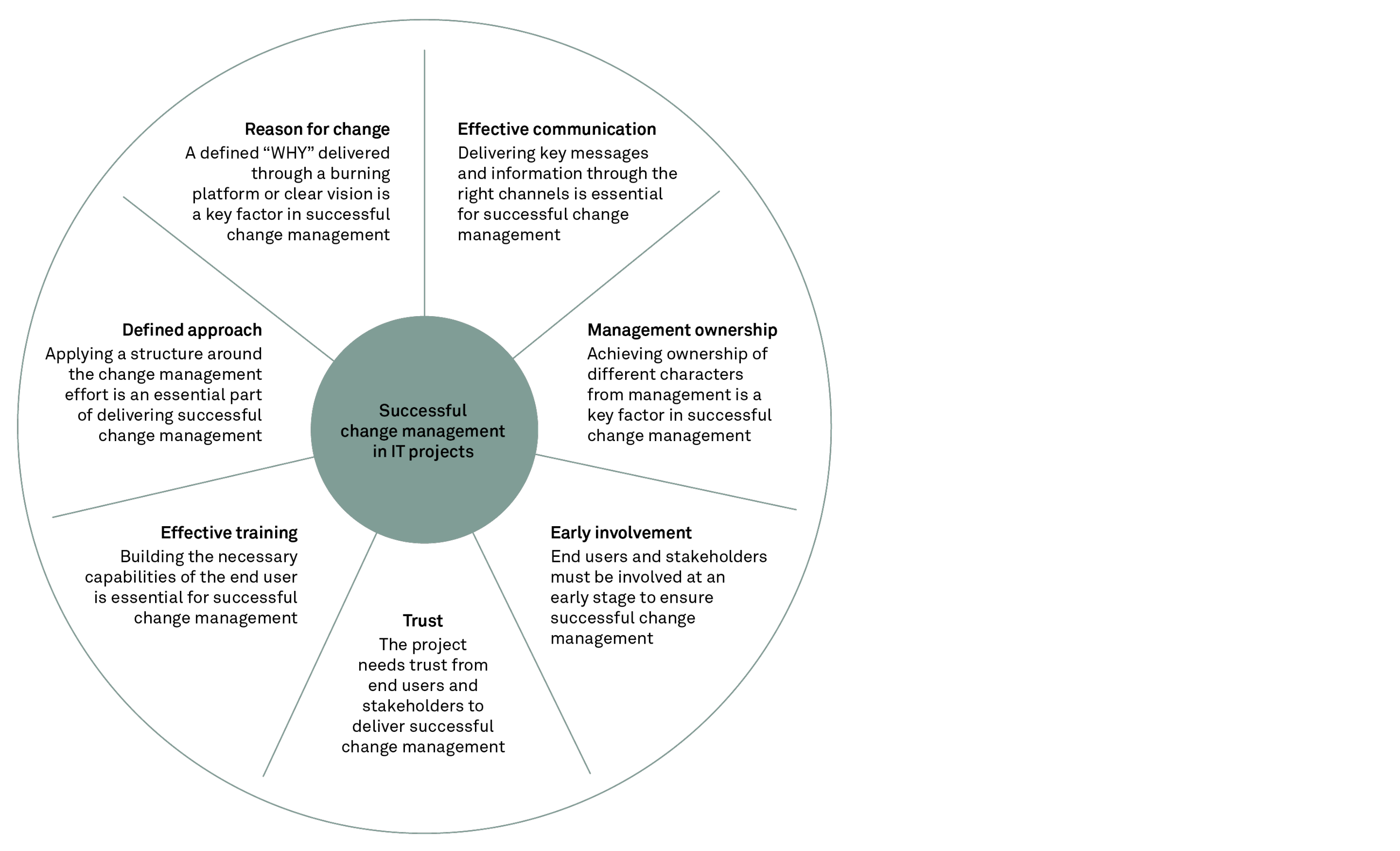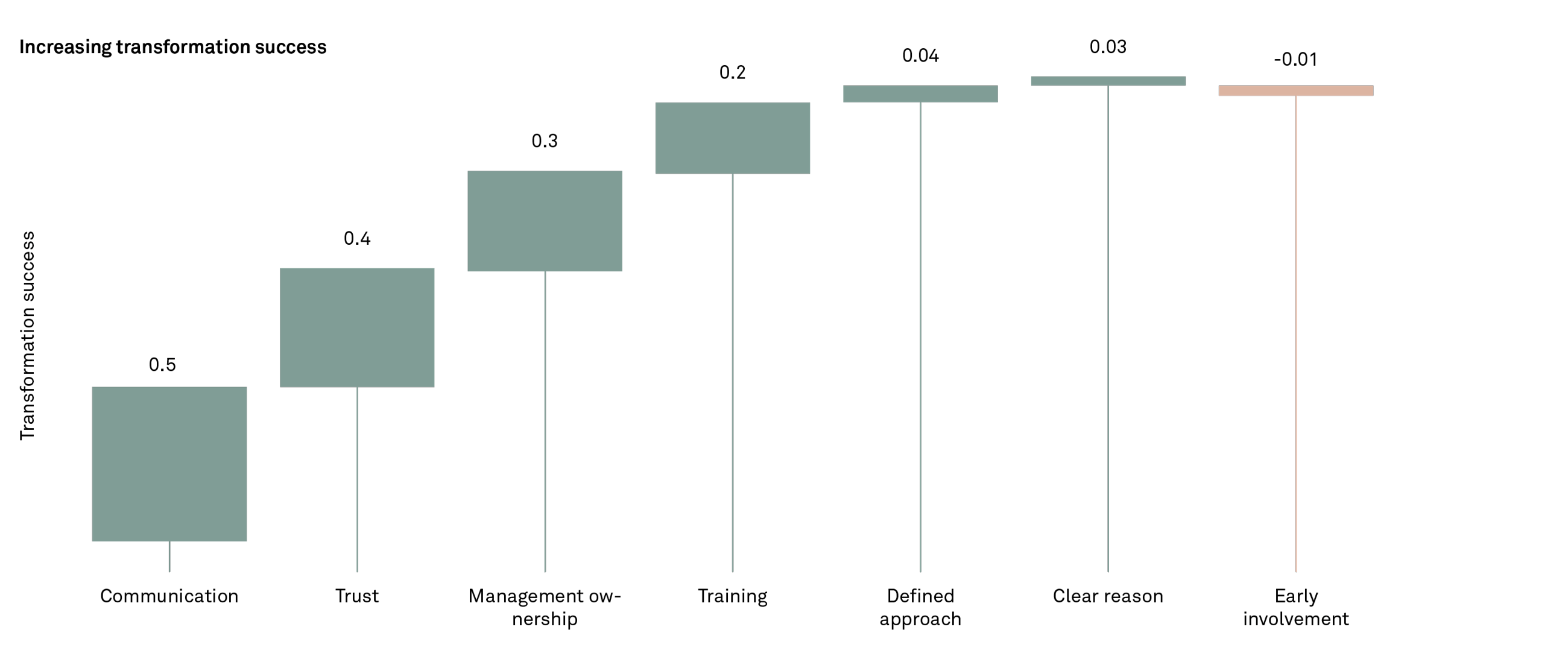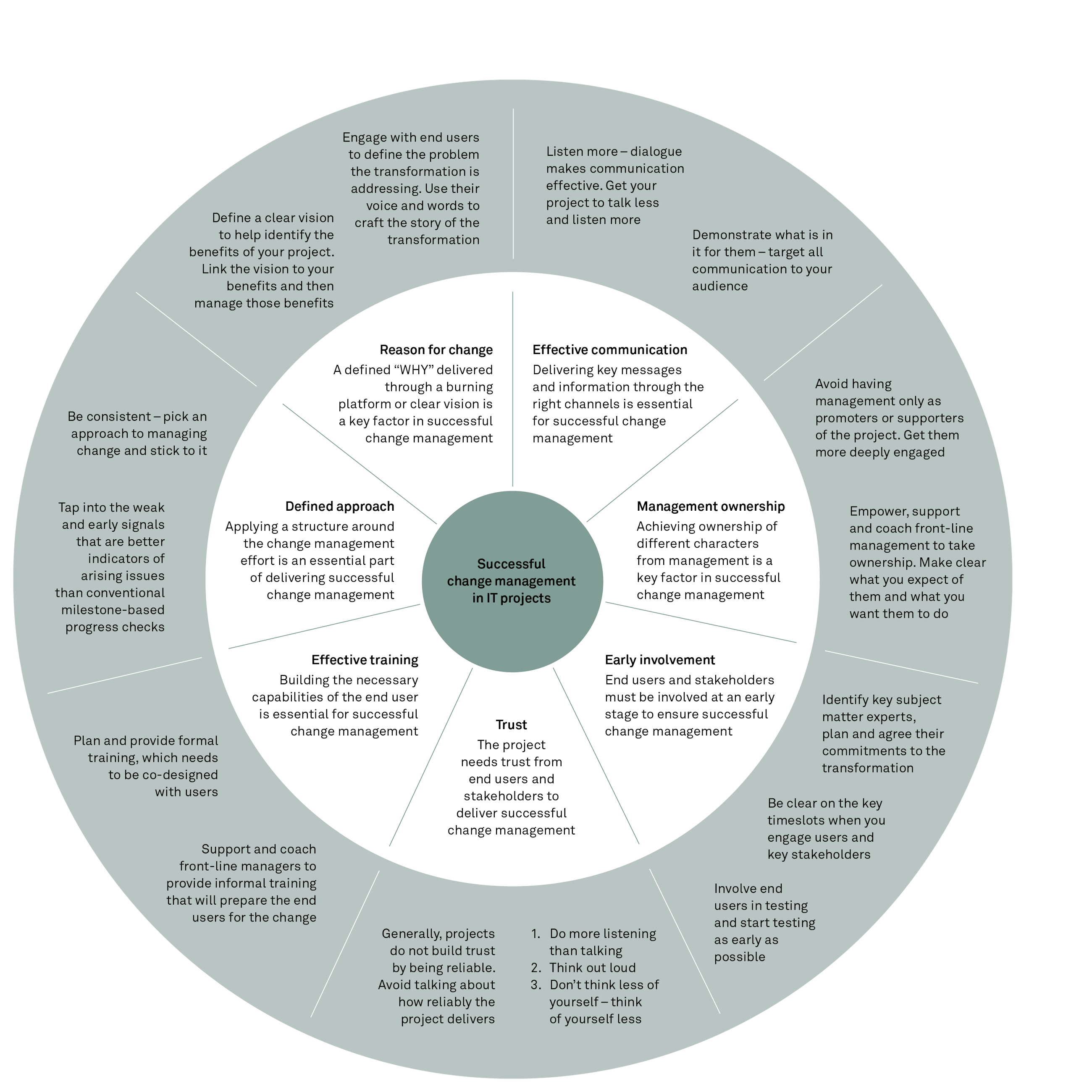Putting data behind the factors that create success in IT change projects
5 June 2019
Nearly all IT projects require some form of organisational change for new technology to be implemented. We know that doing organisational change successfully can be a challenging task, so we set out on a quest to put some data behind the things that matter most in IT change projects. This has now been condensed into a report – and the results are rather surprising.
IT projects is a costly business, with some estimates putting the annual investment at more than USD 1.2 trillion. When we run IT projects, we almost always introduce new information technologies to the organisation in question. This affects products, business processes, sales channels and supply chains – and the organisation almost always needs to change to fully integrate and exploit the new technology that they have invested in.
From research and experience we know that implementing organisational change may be a challenge. Therefore, we decided to crunch some numbers about what matters most in IT change projects.
Seven levers of change – but not of equal importance
In collaboration with the University of Oxford, we studied academic literature and change frameworks, and we found the seven most commonly agreed levers that influence the success of change projects.
We collected data from 155 IT change projects, testing the seven levers and their importance for delivering successful change through IT projects. Four levers proved statistically significant, but surprisingly, we did not find any statistical significance for the success of digital transformations for three otherwise commonly assumed levers.
The four significant levers are:
- Effective communication: Successful digital transformations require effective communication that is targeted, dialogue-oriented and carried out by front-line management.
- Establishing trust-based relationships: The project needs to focus on building trusted relationships between the project and its stakeholders and end users.
- Transferring ownership to management: More engagement from management (top, middle and front-line) is associated with increased transformation success.
- Providing effective training: Effective training comes in many formats and the content may vary, but generally, co-creating training with the people who need to change improves its effectiveness.
The three relatively insignificant levers are:
- A defined approach to change: Having a defined approach is essential to securing and safeguarding the dedicated resources and budget for change. Sticking to the change methodology is nearly always more important than what the change methodology actually is.
- A clear vision for change: Having a clear and appealing vision in its own right is not a direct lever of success. What matters most for success is what a project does with the vision.
- Early user involvement: There is no direct link between early user involvement and success. Data provide simple recommendations: Never test without user involvement. Test as early as possible.
However, six of the seven levers have some positive correlations with the success of digital transformation, some of course stronger than others. We found no direct link between early user involvement and transformation success. Nevertheless, what our data show is an indirect effect, as the success depends on the involvement of users in testing. And the earlier a project conducts tests, the better.
Also, the levers are associated with each other. For example, effective communication is linked to trust-based relationships, to having a clear vision and a structured approach to change. Here, having trusted relationships increases the effectiveness of communication and vice versa.
Based on condensed knowledge from science and practice
The report is a result of +4 years of research together with the University of Oxford as well as 155 change projects from both the public and private sector. We started out by condensing 2,000 academic articles and studying +100 frameworks for change management. From this, we found seven levers commonly agreed on as critical for managing organisational change in IT projects. We validated these in workshops with change practitioners, before studying the 155 projects in depth.
Learnings to create even more success in our change projects
In our report, we present you with research findings that illustrate multiple tools for application in practice. The core effects that you should consider within each lever are shown in the figure below:
We hope that by applying these learnings in practice, you can deliver even more successful change in your IT projects.
To deep dive into the subject matter, you can download the report below. And you are of course also always welcome to reach out to discuss the application of the results in your project and organisation.







